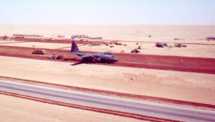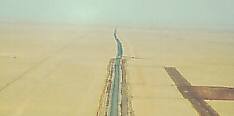

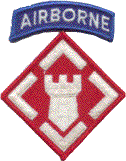 Following the Iraqi invasion of Kuwait on 2 August 1990,
the 20th Engineer Battalion (Combat) at Fort Campbell was alerted for
deployment to Saudi Arabia. At the same time, Lt. Col. Frank D. Ellis,
the battalion commander, was given a mission from the post commander to
assist in the deployment of the 101st Airborne Division. The 20th
Engineers walked a tightrope as it handled the dual missions of support
to another unit, and training itself for a short-notice overseas
deployment. During this period, the 41st Engineer Company (Medium
Girder Bridge) and 114th Engineer Detachment (Fire Fighting) were
detached from the 20th Engineers and stayed at Fort Campbell for the
remainder of the war.
Following the Iraqi invasion of Kuwait on 2 August 1990,
the 20th Engineer Battalion (Combat) at Fort Campbell was alerted for
deployment to Saudi Arabia. At the same time, Lt. Col. Frank D. Ellis,
the battalion commander, was given a mission from the post commander to
assist in the deployment of the 101st Airborne Division. The 20th
Engineers walked a tightrope as it handled the dual missions of support
to another unit, and training itself for a short-notice overseas
deployment. During this period, the 41st Engineer Company (Medium
Girder Bridge) and 114th Engineer Detachment (Fire Fighting) were
detached from the 20th Engineers and stayed at Fort Campbell for the
remainder of the war. The battalion focused on training that would assure success in the blistering sands of Iraq. Training events included twelve mile road marches in full combat gear with flak vests and physical training in chemical protective gear, in 105 degree heat in Fort Campbell at the peak of their August summer. According to Lt. Col. Ellis, "...we did NBC [nuclear, biological, and chemical] training to where we were so proficient that it was almost stupid."
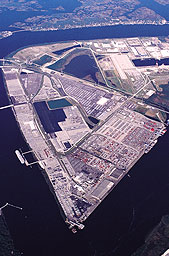 The battalion moved its equipment via rail and
road convoy to Jacksonville, Florida, to load it onto equipment
transports (photo to left). With all the other units being deployed,
U.S. Transportation Command was intent on loading ships as efficiently
as possible, with only minor regard for unit integrity; the result was
20th Engineer equipment spread across seven different ships. Except
for a small number of soldiers who accompanied the equipment onboard
ship, the battalion flew from Fort Campbell to the Saudi air base at
Dhahran, arriving on 20 October 1990. The battalion was authorized 809
men, but deployed at only about 82% strength; new soldiers were
received several months later, that brought the unit to 96% strength in
time for the final phase of the war.
The battalion moved its equipment via rail and
road convoy to Jacksonville, Florida, to load it onto equipment
transports (photo to left). With all the other units being deployed,
U.S. Transportation Command was intent on loading ships as efficiently
as possible, with only minor regard for unit integrity; the result was
20th Engineer equipment spread across seven different ships. Except
for a small number of soldiers who accompanied the equipment onboard
ship, the battalion flew from Fort Campbell to the Saudi air base at
Dhahran, arriving on 20 October 1990. The battalion was authorized 809
men, but deployed at only about 82% strength; new soldiers were
received several months later, that brought the unit to 96% strength in
time for the final phase of the war. 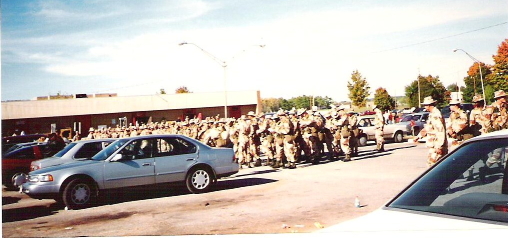
Preparing to depart Fort Campbell [1]
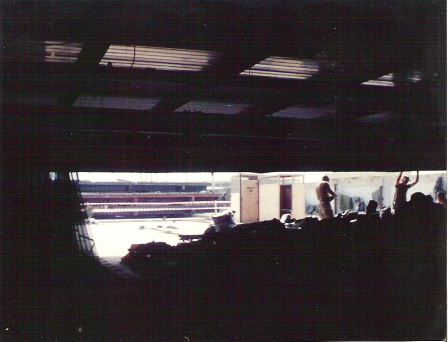
Troop billeting at MABCO [1]
Over the next few months, in addition to missions and tasks executed for other units, the battalion constructed a first-class base camp for itself--Camp Apache. Within several months, the battalion was housed in GP medium tents with wooden floors; a centralized power distribution system for billeting and offices; and a water distribution system with showers. Because of the 20th Engineers' proximity to the Kuwaiti border and Iraqi rockets and long-range artillery, the engineers concentrated on construction of a complex of underground bunkers and other protective structures.
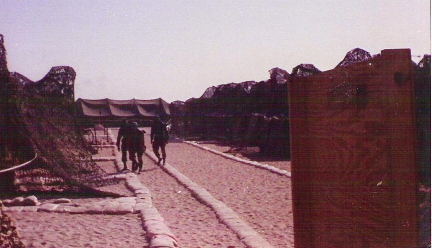
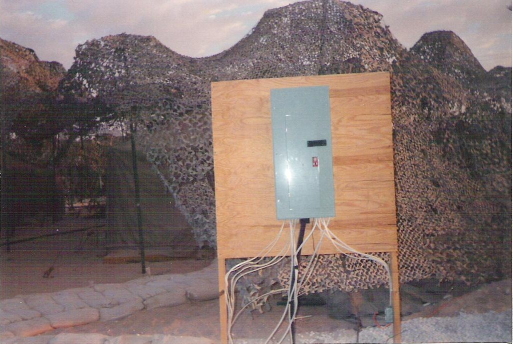
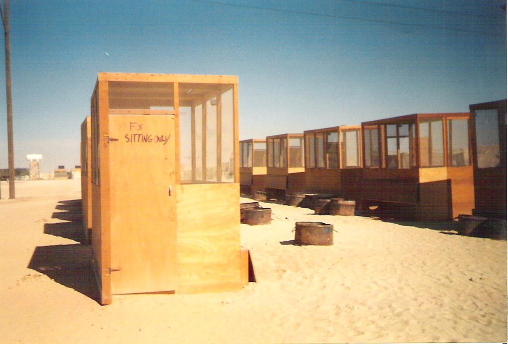
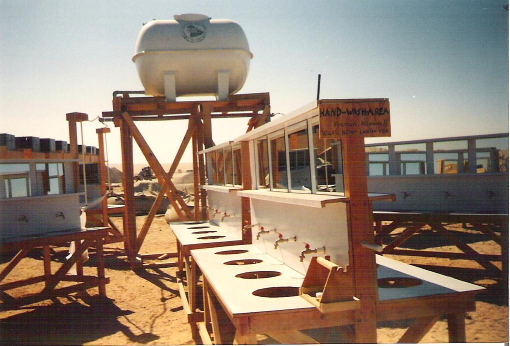
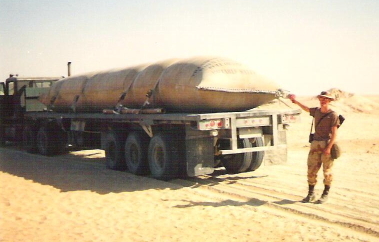
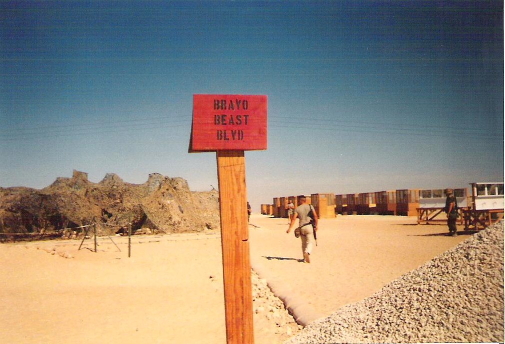
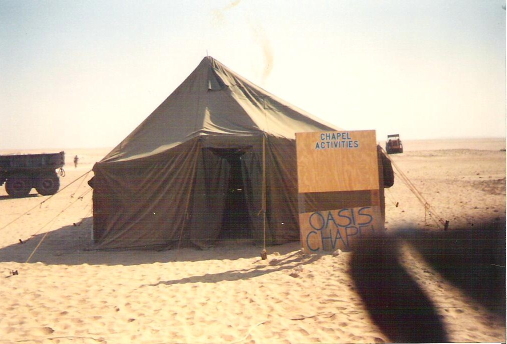
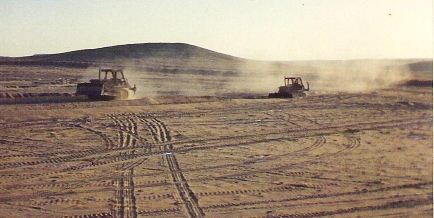
Construction of Ammunition Supply Point Skibbie [1]
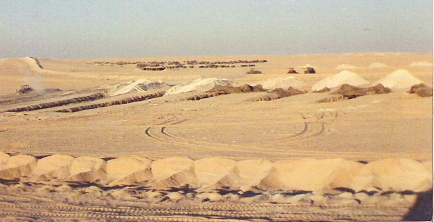
Completed Ammunition Supply Point Skibbie [1]
Photos courtesy Mathew Holsenback, 3rd Platoon, Company D, 20th Engineer Battalion
Throughout the Desert Shield, or defensive phase, of the Gulf War, the 20th Engineers executed short missions at the same time it was working larger projects. The battalion provided survivability positions for the artillery and rocket systems of the 75th and 212th Field Artillery Brigades, facilities for aviation units, and an entire base camp for the 561st Combat Support Battalion.
Towards the end of Desert Shield, begining on 16 January 1991, the 20th Engineers were assigned the mission to construct LOGBASE CHARLIE. [See comments from Colonel Julian Sullivan, commander of the 507th Area Support Group, on the 20th Engineers' performance at LOGBASE CHARLIE.] Logbase Charlie, the largest logistics facility built during the war, was designed to support the entire XVIII Airborne Corps (24th Infantry Division, 82nd Airborne Division, 101st Airborne Division, 6th French Armored Division, and 3rd Armored Cavalry Regiment) in its attack into Iraq. In an effort to maintain operational security, no combat forces were displaced from positions further to the east, so the 20th Engineers were prepared to defend themselves in the event of any Iraqi attack. Features of the logistics base included a transfer petroleum terminal (TPT) with a capacity of 5.2 million gallons, an ammunition supply point with a capacity for 25,000 short tons, a water storage and distribution point point with bags for 2 milltion gallons of water, seven field hospitals, and a road and berm network throughout the huge facility. The battalion, for a short time, also maintained the Forward Landing Strip near Log Base Charlie; the FLS handled a heavy load of US Air Force and allied tactical cargo aircraft.
The flight landing strip at Log Base Charlie ran down the middle of Tapline Road, also known as MSR Dodge. Taxiways and the parking apron were compacted sand. Vehicular traffic from Tapline Road was diverted to parallel temporary roadways carved out of the sand. Note the Tapline (Trans-Arabia Pipeline) to the south of the road.
As the offensive phase of the war neared, the engineers continued to prepare for combat. The unit was equipped with 90mm recoilless rifles for its anti-armor capability, but because of a shortage of ammunition, the battalion trained to use AT-4 anti-tank rocket launchers, instead. On 3 January, two combat engineers of the battalion were seriously injured during AT-4 training, when they mistook a live AT-4 with a simulator and the weapon discharged inside a tent. In another accident, on 10 January, one soldier of the battalion was seriously injured when he was run over by a road grader during this operation.
To prepare for the upcoming attack into Iraq, the 20th Engineers cut three new roads into an escarpment in northern Saudi Arabia; this new road would eventually provide the attack route for the French 6th Light Armor Division into Iraq.
For Operation Desert Storm, the 20th Engineers were assigned to follow the French 6th Light Armored Division into Iraq; the 27th Engineers were assigned to directly support the French during the attack. The French armored units screened the allied attack in the far western region of the theater; the 20th Engineers followed the French at a distance of about 4 kilometers.
The 20th Engineers crossed the border into Iraq on xx February 1991 at about 1400 hours, attacked up Route xx to Objective ROCHAMBEAU, then continued the attack to Objective WHITE. On 28 February, the battalion then was reassigned from the mission to support the French, and was told to move along MSR Virginia to Objective BROWN, and construct Log Base ROMEO. The 20th Engineers breached road craters and wire obstacles along MSR Virginia, but met only light opposition from defending Iraqis. The biggest enemy of the 20th Engineers during this phase of the attack was a howling dust storm that reduced visibility to two feet in front of the moving vehicles.
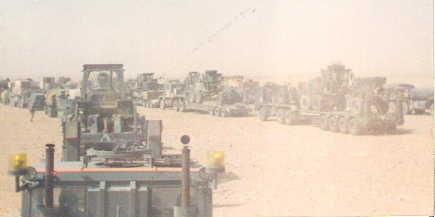
Preparing for the Assault into Iraq [1]
The mission for the 20th Engineers at Al Busayyah was to clear critical areas of unexploded ordnance, and destroy bunkers and Iraqi equipment in and around the town. The town and surroundings had been a major command and control center for the Iraqis, and had received numerous attacks from the Air Force and Army field artillery. According to Lt. Col. Ellis, "... Al Busayyah was literally just saturated with unexploded ordnance.... ICMs (improved conventional munitions, fired from artillery] and Gator mines [self-destroying mines, dropped from US Air Force aircraft]..."
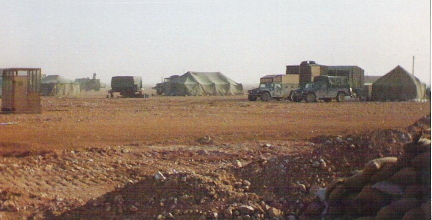
Command Post Inside Iraq
The 20th Engineers then received the mission to continue to provide support to Log Base ROMEO and to maintain a 40-mile section of MSR Virginia.

Click the image above for the official history of the Ground Campaign of the 20th Engineers
After it was clear the cease fire would hold, the 20th Engineers were ordered out of Iraq, and were back into Saudi Arabia on 5 March 1991. The battalion was sent back to the Dammam-Dhahran area to prepare and ship their vehicles and equipment.
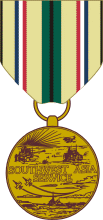


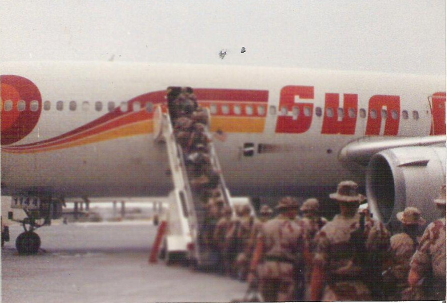
Troops of the 20th Engineers Boarding Aircraft to Return to Fort Campbell [1]

Click the image above for the official post-war interview with the battalion commander, Lt. Col. Frank D. Ellis
[1] Photos compliments of John Faine, Company B, 20th Engineers, Operations Desert Shield and Desert Storm
